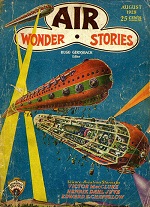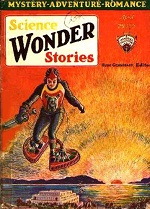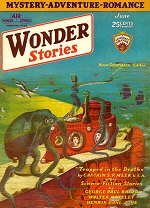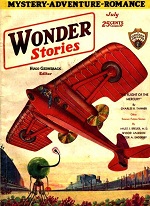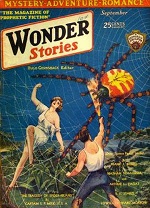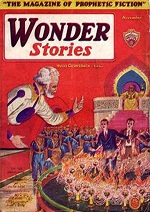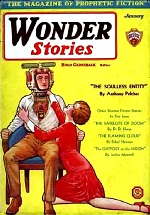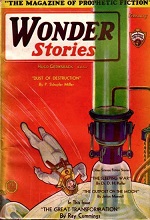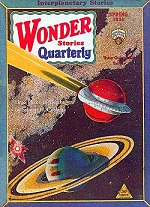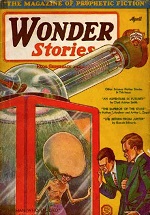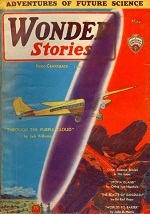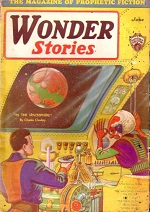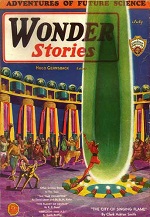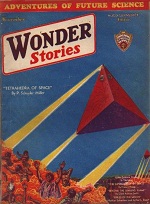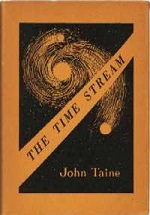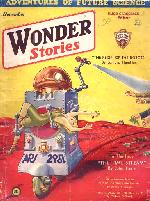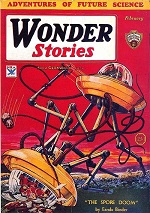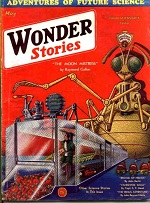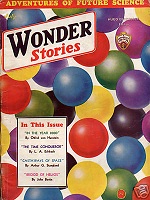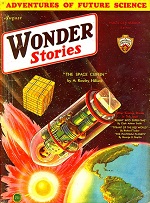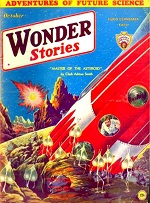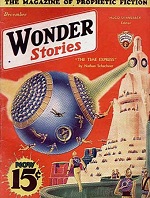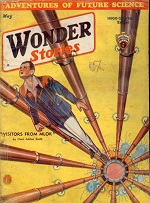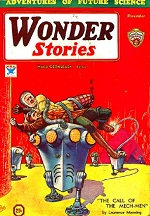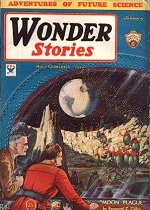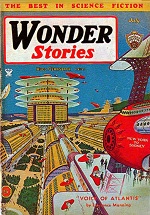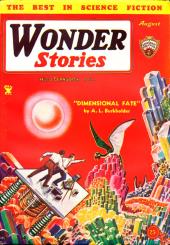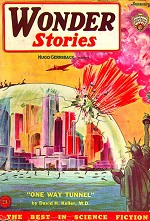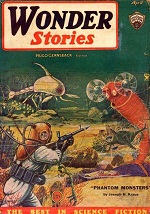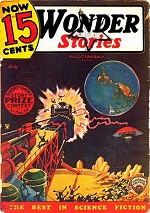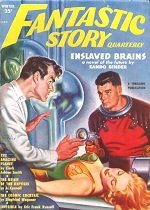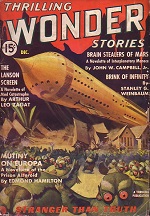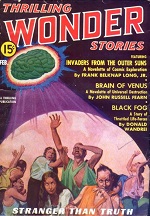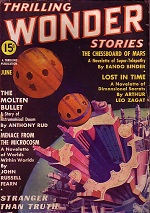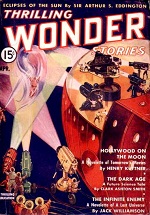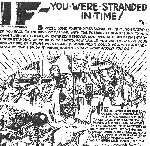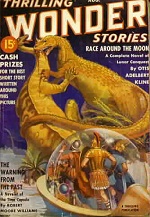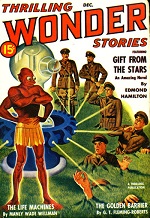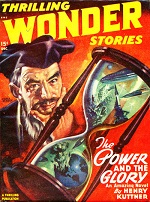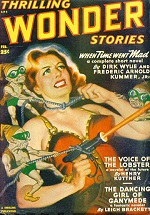Short Story
Addison, Time Traveler
- by Henrik Dahl Juve
- in Air Wonder Stories, August 1929
After wandering around the fourth and fifth dimensions for some time, 20th century scientist Theodore A. Addison rematerializes himself in a 28th century filled with many amazing inventions and a war between the west and the Occidentals. In his review of the story, Robert Jennings notes that “Every few paragraphs in the story everything stops as the protagonist inquires about the science behind some future marvel.” In all, three stories were set in this world, although only the first two (“The Silent Destroyer” and “The Sky Maniac”) featured Addison; the third (“The Vanishing Fleet”), according to Everett F. Bleiler, was an adventure set against the same background.
Apparently, Juve and his wife lived just down the road from me (in Moscow, ID) while I was bean’ edicated in Pullman, but I didn’t know of him then.
Apparently, Juve and his wife lived just down the road from me (in Moscow, ID) while I was bean’ edicated in Pullman, but I didn’t know of him then.
As they watched, paralyzed, the building and air barge fell apart and hurtled toward the earth. The entire train had been split from end to end. The attacker now swung back and the then darted away.

